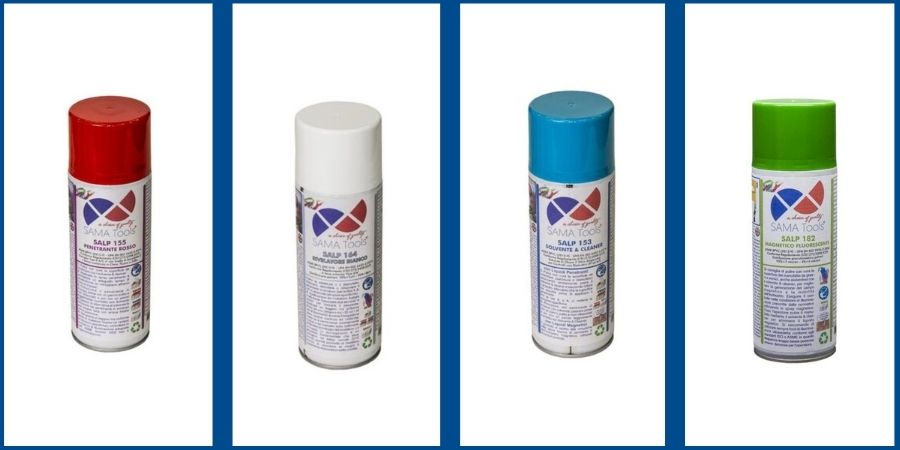The process of manufacturing efficient and high-performance industrial pumps involves a series of inspections and tests, both before and after assembly. This series of tests is essential to verify that the production processes have been carried out according to the manufacturing criteria and the required standards. It is essential to bear in mind that, during their operation, pumps are normally exposed to numerous factors such as:
Mechanical stress.
Hydraulic loads.
Thermal variations.
Environmental factors.
Therefore, the manufacturer must ensure that the pumps are ready to deal with all these factors to ensure efficient and reliable performance, even in worst case scenarios.
Non-destructive testing for industrial pumps
Non-destructive testing is a great way to verify if the pumps being manufactured are ready to operate efficiently and reliably.
Some common non-destructive tests performed on pumps include:
Ultrasonic tests
Ultrasonic tests are a great way to verify the performance of different areas of the pumps. Common areas tested with ultrasound technology include:
- Material thickness
- Material hardness
- Material cracks and other discontinuities
- Corrosion
- Integrity of welds
It is clear that verifying the performance of the areas mentioned above is essential during and after the production of the pumps to guarantee proper operation.
This type of tests can be performed with tools such as:

In photo: Ultrasonic hardness tester SAMA Tools
Magnetic particle detection
These types of tests can be performed by measuring instruments such as our ultrasonic thickness gauges, ultrasonic hardness testers or ultrasonic flaw detectors.
As the name suggests, this type of non-destructive test uses the magnetic particle method for the detection of possible flaws on the surface or at sub-surface levels of the materials.
This test is particularly useful to verify the integrity of welded areas and casting parts, and helps to identify cracks and other defects before the pump goes into operation.
Tools such as our AC/DC magnetic detector and our digital gaussmeter can be of great help when performing magnetic particle tests on pumps.

In photo: AC/DC magnetic detector and our digital gaussmeter SAMA Tools
Dye penetrant testing
This is a test to verify the integrity of materials. It takes advantage of highly capillary liquids that are used to reveal possible defects and discontinuities on the material. This helps identify problems in welds, and other critical areas in the pumps.
Some penetrating liquids we offer include:
- Fluorescent penetrant spray
- White penetrant spray
- Red penetrant spray
These are three important non-destructive tests that are recommended to guarantee that pumps are ready to withstand the factors mentioned above, especially those related to the operation of machines, such as mechanical and hydraulic loads.
Nevertheless, there is another important aspect to verify during production, as well as after some time, when maintenance is required.
Read on as we explain further.

In photo: Penetrant spray SAMA Tools
Coatings that protect against corrosion and other environmental factors.
Industrial pumps that are exposed to the environment, especially under tough conditions, require special protection to guarantee operation without failure.
A common practice is the application of special coatings to protect against corrosion and other environmental effects. To achieve the required coating protection, both the surface of the materials being coated and the coating applied need to comply with certain requirements.
Some examples of these requirements are:
- Adequate surface roughness
- Proper adherence of the coating
- Correct coating thickness
- Expected coating elasticity
- Specific hardness and abrasion resistance
To verify compliance with these requirements, some tests and measurements must be carried out. Some of the required tools include:
- Roughness measuring instruments
- Coating thickness measuring instruments
- Mechanical film performance measuring instruments
In addition, pumps must be designed to very tight tolerances and the require high-precision manufacturing processes to operate as efficiently as possible. Furthermore, these tolerances must be maintained throughout their lifespan. However, thermal variations from operation or from exposure to the environment in different seasons may affect the dimensions of the different parts, thus deviating from the tolerance ranges.
A good way to ensure the parts of the pump are within the tolerance range, and to identify if thermal variations are having an impact, is by verifying their dimensions.
However, for some parts, dimensional verifications may require special measuring instruments. But any manufacturer striving for excellence knows the investment is worth it. And this is the case for several of our customers that work in this sector.

Photo by www.canva.com
Other tests to produce high-performance industrial pumps
There are also special measuring instruments that help the customers guarantee that the dimensions of the different parts of the pumps and pressure units comply with their standards.
Among the most popular tools, there are the outdoor micrometers with exchangeable anvils and carbide tipped measuring faces – SAX101
With these instruments, even the largest parts of the pumps, including the external coverings, can be measured, while ensuring compliance with tolerances down to 0.01 mm.
Failure to comply with dimensional tolerances could result in a reduction in the efficiency and/or reliability of the products, and can lead to several consequences such as:
Customer dissatisfaction
Negative feedback about the company
Reduced profitability
To ensure high quality pumps and avoid unwanted problems, it’s crucial to implement effective quality control (QC) and quality assurance (QA) processes by using the right tools.
Fortunately, you can rely on the SAMA Tools name-brand to provide you with a wide range of mechanical measuring instruments, such as outdoor micrometers, calipers and dial gauges, as well as a variety of non-destructive testing tools.
Our mission is to support our customers in their commitment to quality control, and for this we are dedicated every day to offer first-class solutions.
If you need assistance in choosing measuring instruments or if you would like specific advice regarding your unique situation, do not hesitate to contact our technical department.
You can call us at 0584392342 – 0584392453 or write to sales@samatools.it





